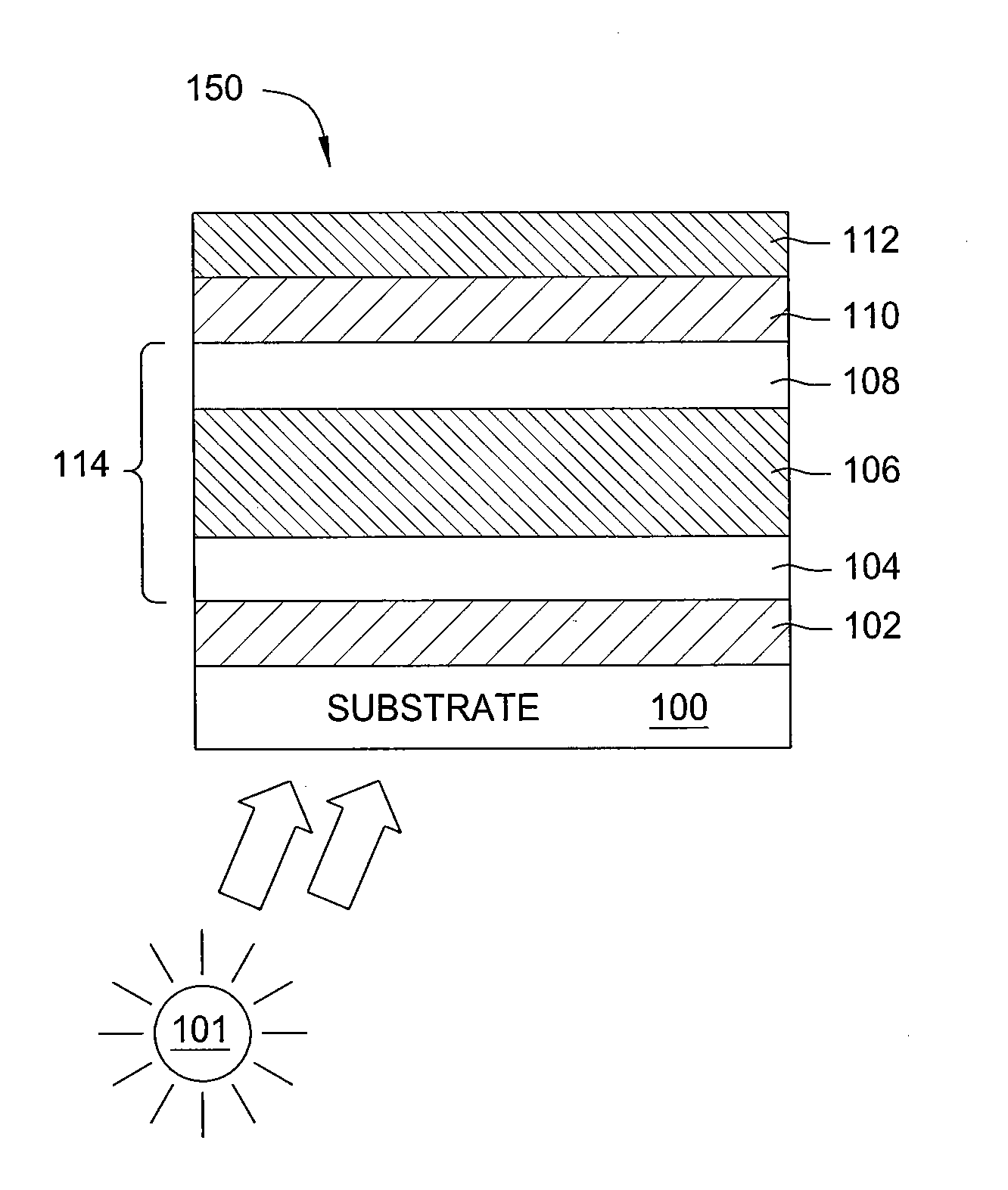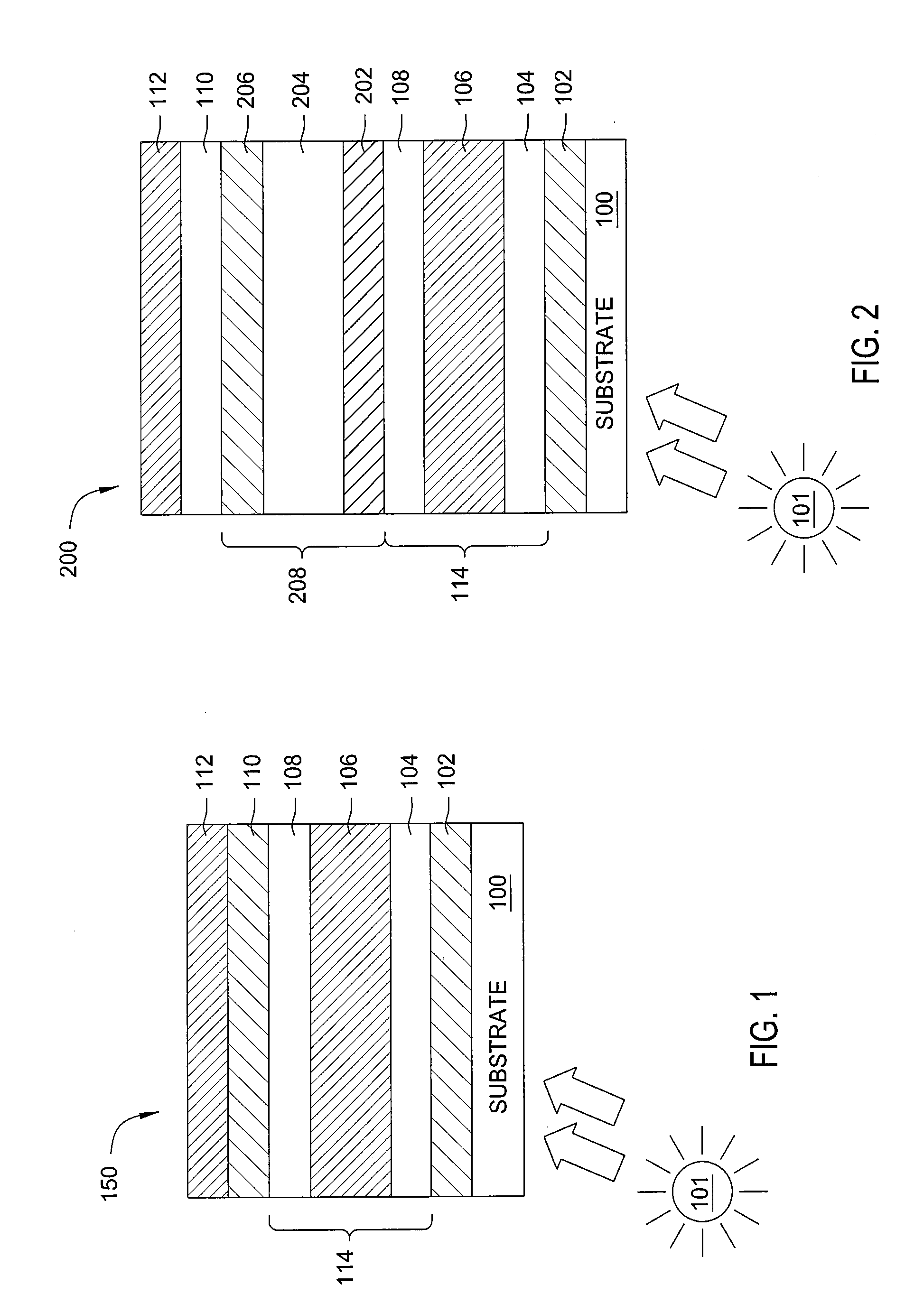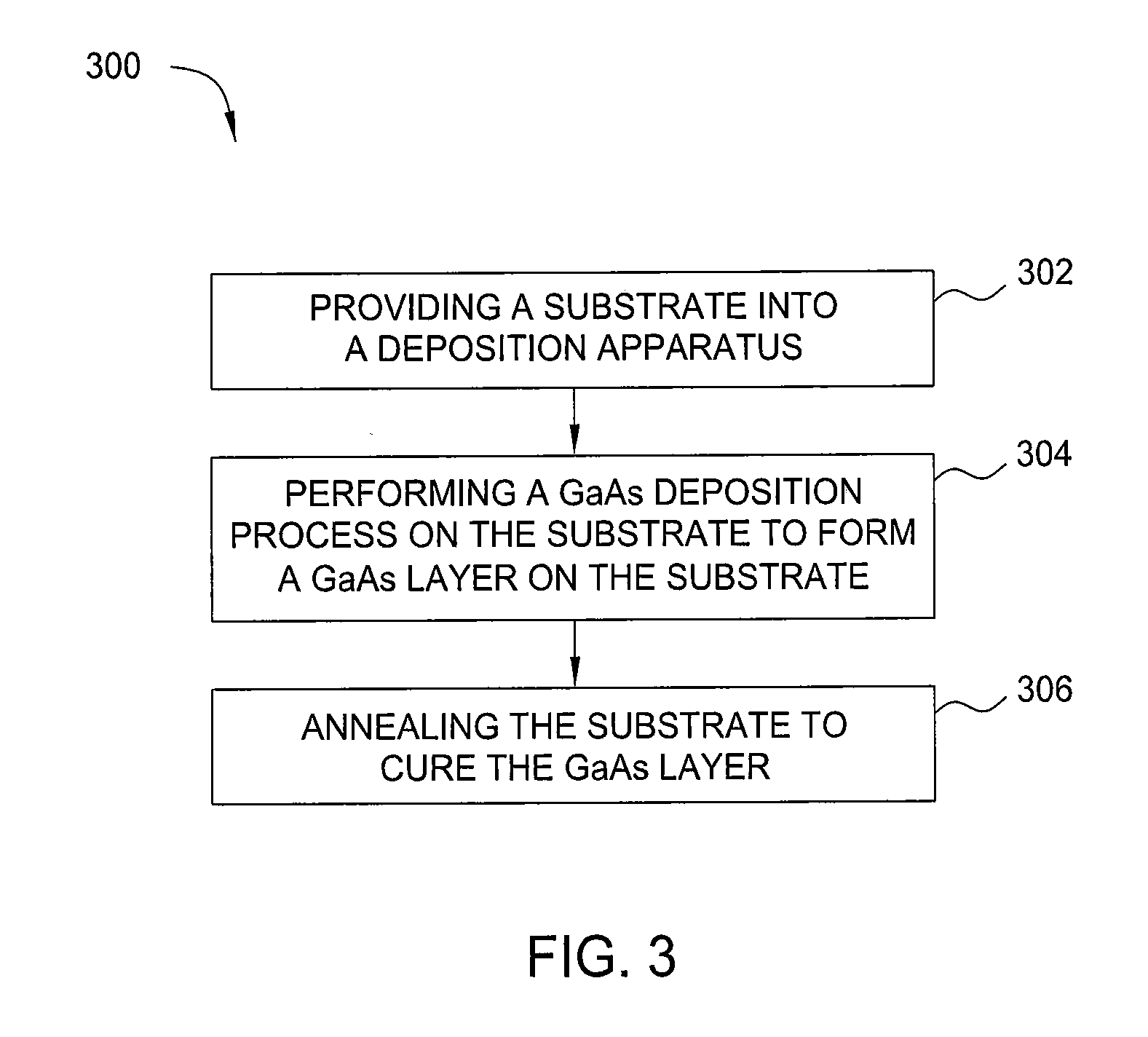High efficiency solar cell device with gallium arsenide absorber layer
a solar cell and absorber layer technology, applied in the field of solar cells, can solve the problems of low device stability, deformation of absorber layer, deformation of film solar cells, etc., and achieve the effect of improving light absorption and conversion efficiency
- Summary
- Abstract
- Description
- Claims
- Application Information
AI Technical Summary
Benefits of technology
Problems solved by technology
Method used
Image
Examples
Embodiment Construction
[0023]Solar cell devices that are formed using thin film deposition processes generally comprise numerous layers of material, or films, of differing composition that can be put together in many different ways. Most films used in such devices incorporate a semiconductor element that may comprise silicon, germanium, gallium, arsenide, indium, carbon, boron, phosphorous, nitrogen, oxygen, hydrogen and the like. Characteristics of the different deposited films include degrees of crystallinity, dopant type, dopant concentration, band gap, film refractive index, film extinction coefficient, film transparency, film absorption, and conductivity.
[0024]Charge generation during a photovoltaic process is generally provided by one or more light absorber layers. Typically, the electron-hole pair generation process predominantly occurs in an intrinsic layer that is used to space the oppositely doped p-n regions of a p-i-n type thin film solar cell device apart. The phrase “intrinsic layer” is typi...
PUM
| Property | Measurement | Unit |
|---|---|---|
| temperature | aaaaa | aaaaa |
| temperature | aaaaa | aaaaa |
| temperature | aaaaa | aaaaa |
Abstract
Description
Claims
Application Information
 Login to View More
Login to View More - R&D
- Intellectual Property
- Life Sciences
- Materials
- Tech Scout
- Unparalleled Data Quality
- Higher Quality Content
- 60% Fewer Hallucinations
Browse by: Latest US Patents, China's latest patents, Technical Efficacy Thesaurus, Application Domain, Technology Topic, Popular Technical Reports.
© 2025 PatSnap. All rights reserved.Legal|Privacy policy|Modern Slavery Act Transparency Statement|Sitemap|About US| Contact US: help@patsnap.com



